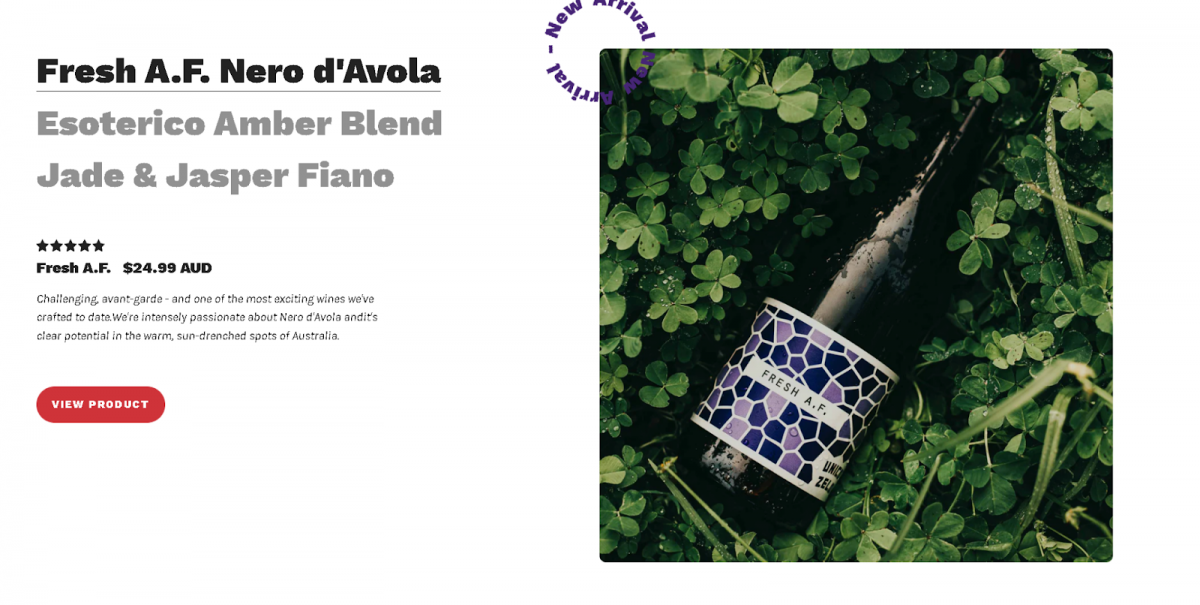Since the onset of the COVID-19 pandemic, selling wine online has become more popular (and profitable) than ever.
In 2021, roughly 12% of all wine purchased in the UK was purchased online. And while that probably doesn't sound impressive, it represents a 131% increase over the 2019 figure. That's nothing short of remarkable.
How can wineries capitalise on this trend? Simple—direct-to-consumer (DTC) wine.
DTC wine is one of the fastest growing areas of the alcohol industry, and if you want to stay competitive, you need to know how DTC wine works. Don't worry, though — Marzipan is here to help. In this article, we'll break down DTC wine, explain how it works, and discuss its advantages and disadvantages.
So, let's get started!
What Is DTC Wine?
As I mentioned earlier, DTC stands for “direct-to-consumer”. Based on the name, you can probably guess what DTC wine is—it's wine that's sold directly to consumers.
In other words, DTC wine is wine that's sold directly from wineries to customers, without the need for middlemen (i.e., retailers, distributors, restaurants, etc.). DTC wine can be sold either directly from a winery's ecommerce-enabled website or through DTC-focused platforms (like Marzipan).
Why Should You Care About DTC Wine?
We've covered the what, now it's time for the why. Why should you care about DTC wine?
The answer is simple—DTC wine offers numerous advantages to both wineries and consumers, including (but not limited to):
1. Greater Control
When you involve third-parties in the sales process (retailers, distributors, etc.), you lose a degree of control over your brand. The DTC model allows wineries to craft their own message and build relationships with customers on their own terms.
Marzipan makes it easy to organise, manage, and analyse all your customer relationships in one, centralised place. Build loyalty and inspire action with a suite of customer-centred features ranging from embeddable forms to customizable rewards.
2. Increased Profits
By cutting out the middleman, DTC wine can dramatically increase profits—as much as 30-40% higher than traditional methods. DTC wine also allows wineries to maximise profits by being able to adjust prices based on supply and demand with more nuance than retail or wholesale sales.
Marzipan gives wineries the power to offer consumers profitable alternatives to one-time purchases, including:
- Subscriptions
- Clubs
- Collections
- Upsells & Cross-sells
This level of freedom and flexibility can help DTC brands increase sales and drive their bottom line.
3. Improved Data
By selling DTC, wineries are able to capture data like demographics, purchase patterns, and customer feedback. This data can be used to better understand customers, optimise pricing strategies, and improve the customer experience.
With Marzipan's in-app customer analytics features, DTC wineries can get access to even richer data, helping them craft marketing and sales strategies that maximise profits. Whether you create custom segments or let Marzipan create them for you, your campaigns will benefit from the abundance of data that DTC provides.
Those are just a few of DTC wine's advantages—there are plenty more. DTC wine is an incredibly powerful tool for wineries, and it's only going to become more so as DTC sales continue to increase.
4. Greater Reach
DTC wine may not have the reach of traditional avenues (yet), but a significant and unignorable section of the wine-buying public is primarily buying wine online. DTC wine gives wineries the opportunity to tap into this market and reach a larger audience.
What Do You Need To Get Started With DTC Wine Sales?
The transition from the traditional B2B sales model to DTC can be a daunting prospect, but if you have the right systems and tools in place, it doesn't have to be.
Here's a quick rundown of everything that needs to happen:
Marketing & Promotion
The B2B wine model doesn't require much (if any) consumer marketing — you market to retailers and distributors, who then market to consumers.
DTC is a different story. DTC wineries need to use creative marketing strategies and tactics (like digital ads, social media campaigns, etc.) to build brand awareness and drive sales.

Take BABE, for example—this DTC wine brand uses influence connections to generate buzz and sell products.
Branding
DTC brands typically need to put a lot more effort into cultivating a cool, trendy, and attractive brand than their B2B counterparts. We don't have the time to unpack why that is, but trust me — consumers expect it.
That means you'll need to invest a bit of upfront time and money to things like web design, logo design, copywriting, and packaging. You need to understand your consumer segments and create a top-to-bottom experience that speaks to them.

Check out some of the DTC wine brands listed on 1800DTC to get a sense for what's trending and what isn't.
Tools & Platforms
Finally, DTC wineries need the right tools and platforms to succeed. Marzipan is the perfect tool for DTC wineries, as it's designed specifically to help DTC brands reach their customers on their own terms.
Marzipan helps wineries who want to sell DTC build relationships with customers, increase profits, improve data, and expand reach — all while maintaining a high-quality customer experience.
Key Considerations for Online DTC Wine Sellers
DTC wine isn't all sunshine and rainbows—there are a few considerations you should take into account before jumping in.
These include:
- Complex Compliance Requirements: Selling DTC wine (especially internationally) comes with an array of legal, tax, and shipping requirements. Make sure you understand all the rules and regulations before setting up DTC sales.
- Online Age Verification: This is similar to compliance, but specific to DTC. You'll need to have a system in place to verify the age of purchasers before they can purchase DTC wine.
- Shipping Costs: DTC sales can also come with relatively high shipping costs — lots of smaller orders to fulfil, rather than a few large orders. Make sure you factor in the cost of shipping when calculating DTC prices, and consider offering promotions to offset the cost.
- Customer Service: DTC sales require more customer service than traditional methods. DTC brands need to be prepared to handle any and all customer inquiries, complaints, returns, and refunds. Luckily, tools like Marzipan make this process much more manageable.
- Branding & Product Info: Wine is meant to be tasted, not described. And yet, branding and descriptions are often the only way first-time DTC wine customers can make a purchase decision. DTC brands need to make sure they have sufficient product information, detailed descriptions, and high-quality visuals to make the DTC experience as compelling as possible.
DTC Is the Future of Wine Sales
DTC wine sales are on the rise, and they're here to stay. It's a great way to build relationships with customers, increase brand loyalty, and open new revenue streams—all while maintaining a high-quality customer experience.
So if you're ready to make the switch from B2B to DTC wine sales, make sure you understand the above considerations and have the right tools and platforms to succeed.
Photo by Douglas Lopez on Unsplash


